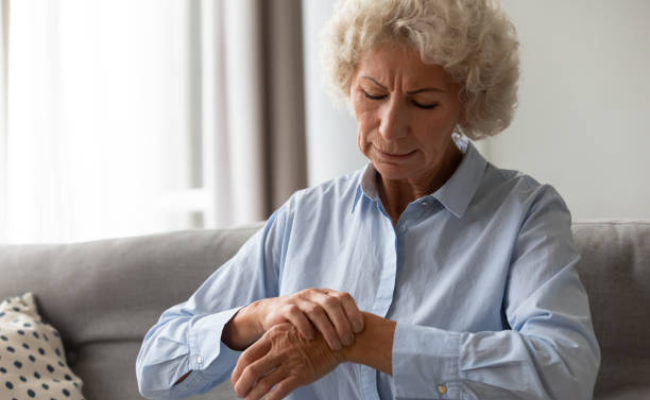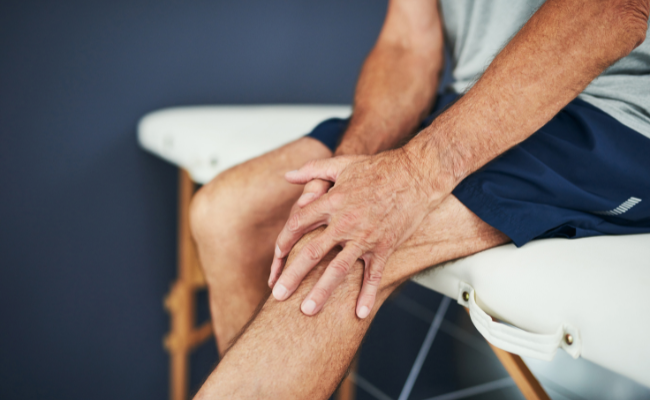Prevent Septic Arthritis Infections: A Comprehensive Guide
Septic arthritis is a painful, potentially life-threatening condition resulting from bone and joint infections. Affecting people of all ages, bacteria entering the joint through wounds, surgeries, or medical procedures typically cause this condition.
The inflammation leads to severe pain, stiffness, and swelling in the affected joint, potentially spreading to other body parts. As millions are affected annually, understanding the causes, symptoms, and risk factors is crucial.
Fortunately, septic arthritis is preventable. Taking proactive measures can reduce your risk of developing this paralyzing infection and ensure your joints remain healthy. In this article, we will explore risk factors, symptoms, diagnostic approaches, and effective prevention strategies for joint infection.
Understanding Septic Arthritis
 This type of arthritis happens when bacteria from an infection in one part of the body get into the bloodstream and travel to a joint. The following are common sources of infection:
This type of arthritis happens when bacteria from an infection in one part of the body get into the bloodstream and travel to a joint. The following are common sources of infection:
Bacterial infection: The most common bacteria that cause this condition are Staphylococcus aureus and Streptococcus species. These bacteria can enter the joint through open wounds, surgical procedures, or bacterial infections in nearby tissues.
Viral or fungal infection: Although less common, viruses and fungi can also cause septic arthritis. Viral infections, such as hepatitis C or human immunodeficiency virus (HIV), and fungal infections, like candidiasis, can cause joint infections.
Risk Factors
Several factors can increase the risk for this type of arthritis:
Age: Infants, older adults, and individuals with weakened immune systems are more susceptible to joint infections.
Pre-existing joint conditions: People with joint diseases or conditions such as rheumatoid arthritis or gout are at higher risk.
Joint injury or surgery: If you recently injured a joint or had orthopedic surgery, the chances of bacteria entering the joint are higher.
Intravenous drug use: Sharing contaminated needles can introduce bacteria directly into the bloodstream, increasing the risk of joint infection.
Prosthetic joints: People with artificial joint replacements are at a higher risk of being. Infections can occur due to bacterial colonization around the prosthesis or through the bloodstream.
How Septic Arthritis Develops
The process of infection leading to septic arthritis typically involves the following steps:
- Entry of pathogens: The infection begins when bacteria or other pathogens enter the body. This can occur through various routes, such as open wounds, surgical procedures, or infections in nearby tissues.
- Circulation in the bloodstream: Once the pathogens enter the bloodstream, red blood cells carry the infection throughout the body, including the joints.
- Adherence to joint tissues: Pathogens can cling to the joint tissues, allowing them to establish an infection within the space in the joint. The joint synovial fluid, which lubricates and nourishes the joints, provides an environment for the bacteria to survive and multiply.
- Joint inflammation: The presence of bacteria triggers an immune response in the joint. The immune system recognizes pathogens as foreign invaders and releases inflammatory mediators to combat the infection. This leads to the characteristic symptoms of septic arthritis, including joint pain, swelling, and warmth.
- Damage to joint tissues: The inflammatory response can cause damage to the synovial lining, cartilage, and other joint structures. The joint may become further compromised as the infection progresses, leading to joint dysfunction and restricted mobility.
- Formation of pus: The immune system’s response to the infection may result in the accumulation of pus within the joint space. The presence of pus increases the pressure within the joint and worsens the symptoms.
If left untreated, the infection can spread, causing further joint damage. This can result in additional complications, including sepsis, a life-threatening condition with widespread infection and organ dysfunction.
Early recognition, diagnosis, and treatment are crucial to prevent the progression of bacterial arthritis. Prompt administration of antibiotics and drainage of the infected joint is essential in controlling the infection.
You may also like: Magnesium Taurate Benefits for Skin: Can It Improve Your Complexion?
Identifying Symptoms

- Joint pain: Intense pain in the affected joint is a hallmark. The pain is usually severe and worsens with movement.
- Joint swelling and warmth: The infected joint may become swollen, red, and warm to the touch due to inflammation.
- Restricted mobility: As the infection progresses, the joint may become stiff and difficult to move.
- Systemic symptoms: In some cases, individuals may experience fever, chills, fatigue, and overall malaise.
Diagnosis and Treating Septic Arthritis
If you or your healthcare provider suspects septic arthritis, your healthcare provider will perform a thorough physical examination and order diagnostic tests, such as the following:
- Joint fluid analysis: A sample of fluid from the affected joint is collected and examined for the presence of bacteria or other pathogens.
- Blood tests: Your healthcare provider might need blood samples to check for signs of infection, such as an elevated white blood cell count.
- Imaging tests: X-rays, ultrasound, or MRI scans can help assess the extent of joint damage.
Treatment Options
Septic arthritis is a severe joint infection requiring prompt treatment. This section delves into various treatment options, encompassing non-surgical approaches like antibiotic therapy and surgical interventions in severe cases.
Learn more about these strategies and their role in managing this condition.
Joint drainage: The infected joint is usually drained by aspiration or surgical intervention to remove pus and reduce pressure.
Treatment with antibiotics: Intravenous antibiotics are administered to combat the infection. The specific antibiotic regimen depends on the identified pathogen.
Supportive care: Pain management, rest, and physical therapy may be recommended to promote healing and restore joint function.
Prevention Strategies
Preventing septic arthritis involves taking specific measures to reduce the risk of joint infections. Here are some strategies that can help prevent septic arthritis:
- Maintain good hygiene
- Treat infections promptly
- Take precautions with wounds
- Manage underlying medical conditions
- Be cautious with joint injuries
- Maintain a healthy lifestyle
If you suspect an infection or have concerns about your joint health, consult a healthcare professional for appropriate evaluation.
You may also like: 5 Easy Steps to Boost Your Immune System
Conclusion
Safeguarding ourselves against septic arthritis infections is a matter of personal health and a responsibility we owe to our bodies. Implementing the preventive measures outlined in this comprehensive guide can significantly reduce the risk of developing this debilitating condition.
Understanding the causes, symptoms, and risk factors of septic arthritis empowers us to make informed decisions about our lifestyle and healthcare choices.
Regularly engaging in exercise, maintaining a healthy diet, practicing good hygiene, and seeking prompt medical attention for any signs of infection are vital steps in preventing septic arthritis.

